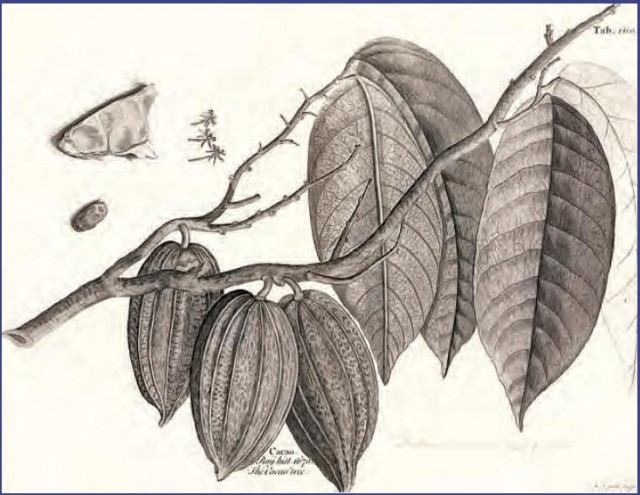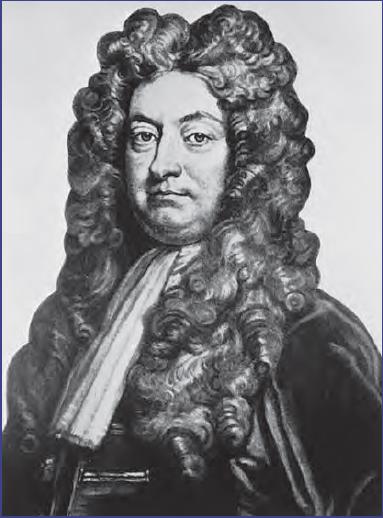Sir Hans Sloane, Milk Chocolate, and the British Museum
Cocoa is the most popular alternative drink to coffee and tea. It is made from the berries of a small tree (Theobroma cacao) that is native to tropical America and the islands of the Caribbean including Jamaica, which is the source of the first cocoa to reach Europe in 1698. The berries develop inside pods, surrounded by mucilage. The beans and mucilage are scooped from the pods and fermented. After fermentation the beans are a dull red. They are dried and are then ready to be exported. The dried beans contain 50 to 57 percent of a fat called cocoa butter. Most of the fat is removed before the beans are ground to make cocoa powder, but when the powder is used to make chocolate some of the butter is restored. The illustration opposite shows cocoa pods.
The drawing first appeared in a two-volume work on natural history, published in 1707 and 1725, with the title A Voyage to the Islands Madera, Barbados, Nieves, S. Christophers and Jamaica, with the Natural History of the Herbs and Trees, Four-footed Beasts, Fishes, Birds, Insects, Reptiles, &c. Of the last of those ISLANDS. The author was Hans Sloane, an Irish-born naturalist and physician, who had toured the region he described and had spent 15 months in Jamaica. It was in Jamaica that Sloane first encountered cocoa. Local people mixed it with water and used it as a medicine, but Sloane described it as “nauseous.”

Nevertheless, he persisted with it and found he could improve its flavor by mixing it with milk to make chocolate. He devised a recipe for this and publicized it on his return to England. After a time people were able to purchase chocolate from apothecaries. In the 19th century Cadbury Brothers began manufacturing chocolate using Sloane's recipe, but as a luxury food rather than a medicine.
Hans Sloane was born on April 16, 1660, in Killyleagh, County Down, Ireland. Even as a child he was an avid collector of curiosities, including coins, medals, seals, drawings, and natural history specimens. He studied chemistry at Apothecaries Hall in London from 1679, taking a particular interest in medical botany, which he studied at the Chelsea Physic Garden. He became a friend of John Ray. In 1683 he toured France, studying anatomy, medicine, and botany, and received his degree of doctor of physics (pharmacy) later the same year. While in France he became friendly with Joseph Pitton de Tournefort. Sloane returned to England in 1685 and was elected a fellow of the recently formed Royal Society. In 1687 he was made a fellow of the Royal College of Physicians. It was at that time that he was invited to travel to Jamaica as personal physician to the new governor.
Following his return, Sloane set up a medical practice in London in 1695. The following year he was made physician extraordinary to Queen Anne and in 1716 to George I. In 1727 he was made physician in ordinary to George II. His practice was obviously successful, but he continued to find time for botany and for adding to his collections. He was made a baronet in 1716. He became president of the Royal College of Physicians in 1719 and of the Royal Society in 1727. The portrait at left shows Sloane at the height of his success.

Sir Hans Sloane retired in 1741. By that time his collection was vast and of great value, and it included collections of natural history specimens he had received from other eminent collectors. Sloane died on January 11, 1753, leaving his collection to the nation on condition that Parliament pay ?20,000 to his executors. This was far less than the collection was worth, and Parliament accepted. The collection, together with a number of other collections, was opened to the public in 1759 as the British Museum. Much of the natural history collection later formed the basis of the Natural History Museum.